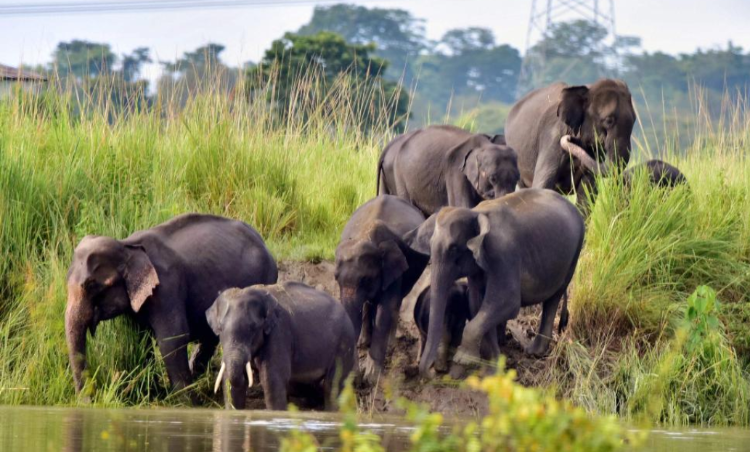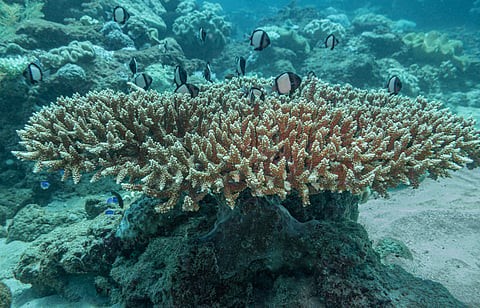





Copyright infringement not intended
Picture Courtesy: https://www.livelaw.in/news-updates/wildlife-protection-amendment-bill-2022-elephants-ownership-parliament-216161
Context: Kerala wants the Centre to amend the Wildlife Protection Act (WLPA) of 1972 due to increasing human-animal conflict, particularly involving wild boars and elephants.
Details
Amendment to Section 11 (1)(A)
Declaration of Wild Boar as Vermin
Reasons for the Amendments
|
Human-Wildlife Conflict |
|
|
Root Causes
|
●Habitat Loss and Fragmentation: Human activities like deforestation, urbanization, and infrastructure development encroach on animal habitats, forcing them to compete for resources with humans or venture into human settlements. This shrinking space and resource scarcity fuel conflict. ●Resource Competition: Growing human populations inevitably lead to increased demand for resources like water, food, and space. This competition directly impacts wildlife, leading to conflict when humans and animals vie for the same resources. ●Human-Wildlife Interactions: Increased human presence in natural areas, including activities like tourism, poaching, and livestock grazing, can disrupt animal behaviour and provoke negative interactions. Unsustainable practices can further exacerbate conflict. ●Climate Change: Changing weather patterns and extreme weather events disrupt ecosystems, alter animal behaviour, and push species into unfamiliar territories, potentially increasing their interactions with humans and leading to conflict. |
|
Consequences |
●Human Casualties and Injuries: Attacks by wild animals can cause serious injuries and fatalities, impacting individual lives and communities. Fear and psychological trauma can also be significant consequences. ●Livestock Depredation: Wildlife predation on livestock can inflict significant economic losses on farmers and herders, impacting livelihoods and food security. ●Crop Damage: Animals feeding on crops can cause substantial economic losses for farmers, jeopardizing their income and food production. ●Animal Population Decline: Retaliatory killings, poaching, and habitat loss can threaten animal populations, pushing some species towards endangerment and disrupting ecosystem balance. |
|
Potential Solutions |
●Habitat Conservation and Restoration: Protecting and restoring critical habitats is crucial for providing animals with enough space and resources, reducing pressure on human settlements and promoting coexistence. ●Wildlife Corridors: Creating and maintaining corridors that connect fragmented habitats allows animals to move freely and access resources, minimizing conflict with humans and maintaining healthy populations. ●Human-Wildlife Conflict Management: Implementing measures like deterrents (fences, alarms), community outreach programs, compensation schemes, and early warning systems can help mitigate conflict, promote coexistence, and foster mutual understanding. ●Sustainable Land Use Practices: Adopting sustainable agricultural and forestry practices like crop diversification, buffer zones, and wildlife-friendly fencing can minimize resource competition and reduce negative impacts on wildlife. ●Research and Education: Understanding animal behaviour, migration patterns, and resource needs through research can inform effective conflict management strategies and promote proactive solutions. ●Public Awareness: Raising public awareness about the importance of wildlife conservation, responsible behaviour in natural areas, and the complex causes of HWC can foster empathy, support for coexistence initiatives, and encourage responsible actions. |
Wildlife Protection Act of 1972
Main objectives
Salient Features of the Wildlife Protection Act of 1972
Categorization of Species
|
Wildlife (Protection) Amendment Act 2022 The number of schedules listing protected species has been reduced from six to four. ●Schedule I contains animals with the highest protection level. ●Schedule II includes animals with a lesser degree of protection. ●Schedule III lists protected plants. ●Schedule IV covers species listed in the Convention on International Trade in Endangered Species of Wild Fauna and Flora (CITES). |
Establishment of Authorities
Challenges and Gaps
Way Forward
Conclusion
|
PRACTICE QUESTION Q. Communities directly impacted by human-animal conflict often face economic hardship. How to create effective management strategies that consider the economic realities of these communities, providing solutions that address conflict while also ensuring their sustainable livelihoods? Answer Structure: ●Identify the main causes and effects of human-animal conflict in different regions and contexts. ●Review the existing best practices on management strategies for human-animal conflict. ●Analyze the economic, social and environmental impacts of human-animal conflict on the affected communities and the wildlife. ●Evaluate the strengths and weaknesses of various management options, such as compensation schemes, insurance programs, community-based conservation, education and awareness campaigns, etc. ●Propose a framework or a set of criteria for selecting the most appropriate and effective management strategy for a given situation, taking into account the needs and preferences of the stakeholders, the costs and benefits of the intervention, and the potential trade-offs and synergies. ●Provide examples of successful or promising management strategies that have been implemented or tested in different settings, highlighting the lessons learned and the challenges faced. |







© 2025 iasgyan. All right reserved